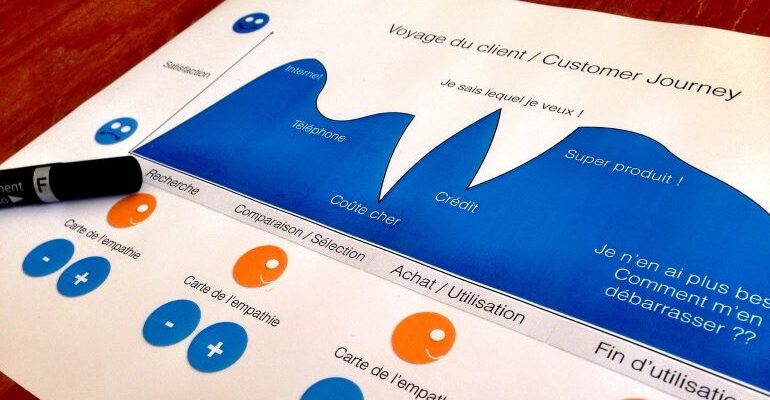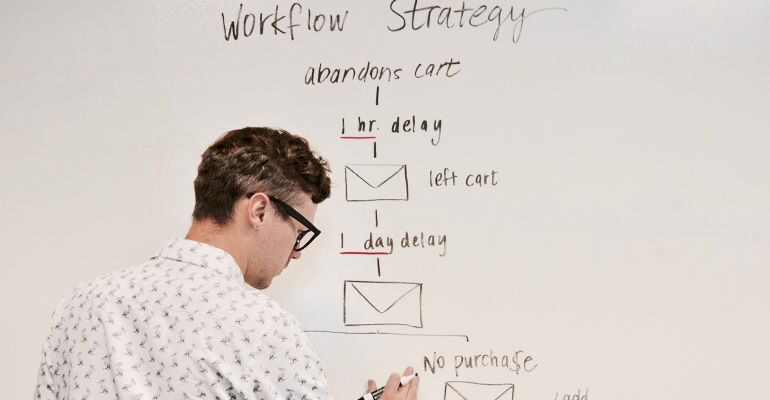Benefits of using automated customer segmentation
Book Your Demo
The goal of every business is to define its customers and their interests, present company products in the best possible way, and ultimately make a sale and gain a returning customer. It sounds simple, but anyone who owns a business knows how challenging and difficult this process is. One of the strategies companies use is automated customer segmentation. This approach guarantees better results, so let’s see all of the benefits of using automated customer segmentation.
Lead nurturing

Before we start talking about customer segmentation, let’s discuss another important element. Every customer is a part of the customer journey. It starts when a customer discovers your company. Anything from that point on counts as a part of the customer journey. We can split it into four different stages:
- Discovery phase – the customer discovers your company via the internet, word of mouth, advertising, or any other way;
- Consideration phase – during this phase, the potential client is comparing your business with competitors. They analyze all of the aspects of your business to try and figure out if you are the best pick for what they need;
- Purchase phase – when the client is satisfied with how you present your offers, they decide to make the purchase;
- Retention phase – after the purchase the customer is trying the product and coming to a decision whether to come back or find a different seller;
Until the visitor completes the purchase phase and converts to a customer, they are one of many leads. A lead can drop during any of the phases if they are not satisfied with your offers. To keep them on the right path, you need to nurture them. That’s where lead nurturing comes from. You need to think about your leads and what they need. The best way to do that is by using automated customer segmentation.
What is automated customer segmentation?
Customer segmentation is a process that helps you to divide your clients into different groups based on their interests, shopping habits, and many other factors. This is a common marketing tactic that has many benefits. If you succeed in automating customer segmentation with the help of software like CRM for movers, you will be able to use customer data to create personalized offers. In return, you will improve customer satisfaction, build a better customer journey, and finally increase the number of conversions.
Here are the most important customer segmentation types:
- customer demographics – customer age, gender, income, marital status, etc;
- psychographics – personal attitude or traits, values, interests, etc;
- customer behavior – spending habits, browsing history, average orders, actions/inactions, etc;
- geographic location – state, city, country, town, county, depending on what your focus is;
- technical knowledge – the favorite type of technological devices customers use, like a mobile phone, or software, etc;
All these customer segmentation groups are of vital importance for your marketing campaign. If you are running an eCommerce business, you can automate these segmentations and lead your customers directly to what they want to see. This eliminates the waste of time for your customers.
How to automate the entire process?
To successfully automate customer segmentation, you need to go through a couple of steps. It all comes down to knowing your clients. Lead scoring techniques and lead nurturing can only be achieved if you know how your clients think.
Understand why they need your products, how they intend to use them, and what problems are they solving by reaching out to you?
When you are segmenting customers into groups, do not be too specific. You need a simple three-word description that creates a broad group of people worth targeting. Otherwise, you will have a bunch of very specific groups of customers that will pull more resources, and will not return the same results.
The next step would be to set your goals based on the segmented groups. There needs to be a value that tells you if your segmentation has positive results. Measurable business goals will show if you need to tweak the segmentation process. That’s where testing comes into place.
- Perform A/B testing that will help you to refine your marketing strategy and achieve better results.
After you complete this cycle, you will revise your segmentation rules, and make changes if necessary.
Efficient groups worth targeting
To help you in this process, here are a couple of useful segmentation groups worth targeting.
If you are releasing an app for your business, focus on the satisfaction of new users. See what the feedback is. Also, track the number of users that downloaded the app, but never used it, and try to engage them via e-mail, social media, and other channels.
The next group would be for users who made an inquiry about your services but never completed the purchase. Try to find out if they are having second thoughts, and what the reasons are for not purchasing already.

Furthermore, analyze customer habits and incorporate them into the values of your company. When they talk to you, customers need to see a part of themselves as a reflection. That’s how you build user habits.
Another great idea is to work on your upselling. Define a group of users who already purchased a product, and see if you can offer them another service that might be of value.
Remember that a satisfied customer is also an advocate for your business. Go through the customer feedback and create a group of clients that could be suitable to advertise you through the word of mouth. Offer them discounted prices for the next purchase in case they refer your company to someone.
The benefits of using automated customer segmentation explained
Using automated customer segmentation has many benefits for your business. This process allows you to save both time and money and put your employees to better use. Remove the redundancies in your marketing strategies, and help yourself to run a more successful business!
Stay Informed
Subscribe for industry
news & updates
"*" indicates required fields
